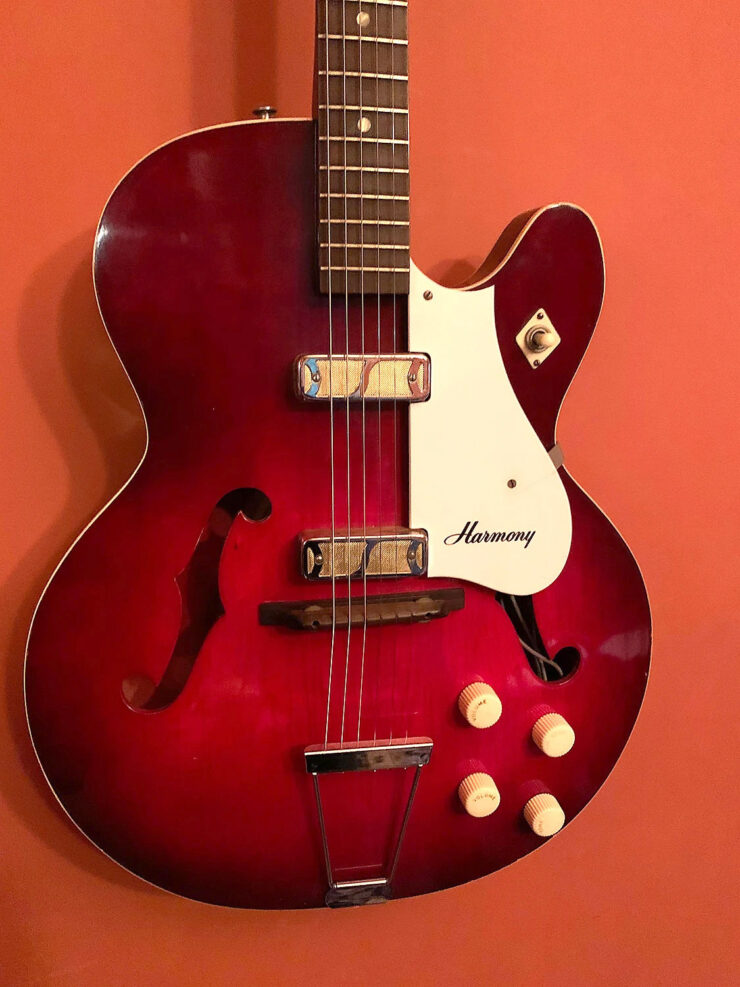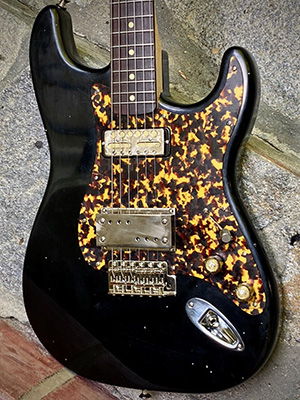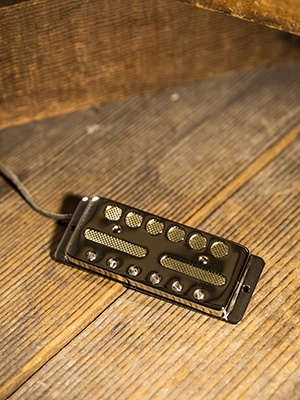
By Mike Wohl
Spend any time looking at unique and boutique guitar builds from the 2010s and 2020s, and you are certain to notice the increasing prevalence of Gold Foil pickups of all sorts of different makes, shapes, and sizes. While once relegated to the pickup cavities of inexpensive 1950s and 60s “student” model guitars from companies like Teisco, Harmony, or Kay, the Gold Foil reconsidered has enjoyed a resurgence in popularity in recent years. This has led many pickup manufacturers to offer a modern take on this unique historical pickup. Big and small, single-coil or humbucking, and often bedecked with ornate Art Deco touches, these sometimes-perplexing pickups have characteristics entirely unique to the Gold Foil style, offering something at once different and familiar.

Gold Foil pickups have their origins in the 1950s, with some debate as to whether the DeArmond company or the Japanese brand Teisco came up with the design first. In either case, both manufacturers became well-known for their foil pickups featured on guitars bearing names like Silvertone, Harmony, Kay, or Guyatone.
Few guitar pickups garner responses as polarizing as Gold Foils. Players tend to love ‘em or hate ‘em, with far less middle ground. To detractors, they’re a fad — an outdated idea best left in the history books. Considering the quality of many vintage instruments that used Foils, along with the wild inconsistency of original examples, it’s easy to understand how someone might reach that conclusion. But looking a little deeper, we can see that modern foil-style pickups are versatile, exciting, and much better made than their predecessors.
Compared with Alnico magnet pickup designs emerging from Kalamazoo and Fullerton, Foil pickups tended to be lower output, using rubberized ferrite magnets not unlike what you might have on a refrigerator. While the magnets used in Gold Foils are not able to hold as strong of a charge as Alnico magnets, they have some unique characteristics — particularly their rich harmonic content (especially in the high end), responsiveness to tone and volume controls, and touch sensitivity. While Alnico magnets provided higher output in pickups made famous by Fender and Gibson, well-made Gold Foil pickups can offer excellent string-to-string balance, with a surprisingly wide dynamic range.
This along with their harmonic complexity makes them uniquely malleable; Gold Foils respond very well to changes in picking hand attack. They can take on very different characteristics with management of your guitar’s volume and tone controls. With this in mind, it’s important to emphasize that Gold Foils are an excellent example of a product that has been improved with time, rather than the reverse. While there are many players who will chase down vintage instruments for legitimate perceptions of quality, vintage-era Gold Foil pickups tend to be far less consistent than modern reimagined versions. Vintage Foils are all over the map in terms of material type and quality; these pickups were built in large numbers for relatively inexpensive guitars. For the most part, the quality reflects that. However, there were enough shining examples that offered something unique and interesting enough to catch the eye of players looking for something other than Strat, Tele, P-90, or PAF.

One such player is Ry Cooder, whose dexterous and versatile playing style is well-complemented by the variety of unconventional pickups in his so-called “Coodercasters”. The Foil’s touch sensitivity and harmonic richness makes it a great fit for bottleneck players, and those who might switch between fingerstyle and flatpicking. Similarly, Gold Foils have carved out a niche in the vintage-inspired fuzzed out and overdriven garage rock sounds of players like Dan Auerbach in his Black Keys work, as well as with players looking for a low-fi classic Chicago or Hill Country-inspired blues sound a la Hound Dog Taylor or R.L. Burnside. They’re a natural fit for “character” tones, in any case, where a player needs a unique voice or a callback to a bygone era. Despite that, the generally elevated build quality of contemporary Foils from today’s skilled builders makes them more reliable and versatile than most original examples.
While Gold Foils boast unique and captivating aesthetics, one point that is often lost is that the signature foil has nearly nothing to do with the pickup’s sound. The foil itself is typically paper-backed aluminum or something similar – it certainly isn’t gold! The unique sound characteristics of the Gold Foil have much more to do with the orientation of the coil and rubberized ferrite magnet than the visible cosmetic features. But there’s something to be said for that look.

Lollar Gold Foil pickups have proven to be very popular with players of all stripes. Ours are true single-coil pickups, inspired by Teisco designs. Players who are chasing Ry Cooder’s signature sound have paired them with our Chicago Steel and String-Through Steel bridge pickups with excellent results. Though plenty of builders and players will use them in matching sets, they’ve also proven to be extremely popular in mixed sets, especially as a neck position pickup paired with a Tele, P-90, or Imperial humbucker in the bridge position. For the curious player, Gold Foils can offer a familiar-yet-novel voice that can be paired with a tremendous variety of other pickups, whether intended to deliver vintage tones or carve out something entirely new.
Lollar Gold Foils are available in different sizes and mounts to fit a wide variety of instruments. They are available with gold, silver, or black foil with cover color options depending on the mount style and enclosure.
By Mike Wohl